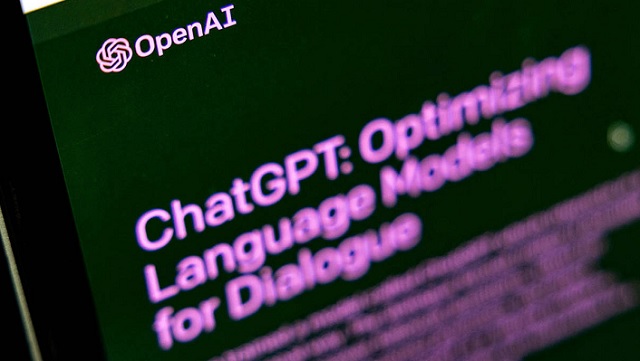
Generative artificial-intelligence models like ChatGPT will revolutionize the economy, though no one can say when
COMMENT | BARRY EICHENGREEN | The first rule of forecasting, the financial journalist Jane Bryant Quinn once observed, is this: give them a forecast or give them a date; just never give them both.
So, here’s a not very bold forecast: Generative artificial-intelligence models like ChatGPT will revolutionize the economy. We just can’t say when.
Nor can we say where. Among the key questions lost amid the flurry of commentary on generative AI is which countries will benefit, and which will not.
Will the United States, a first mover in this domain, grow even more dominant economically? Will developing countries’ traditional route to economic growth, which runs through employment in export-oriented manufacturing, be overrun by AI-empowered robots? Will India and the Philippines, which seek to grow by expanding their service sectors, find this avenue barred as generative AI displaces coders and AI-powered chatbots supplant call-center employees?
Certainly, the US possesses advantages in developing large language models (LLMs). It benefits from close business-university collaboration, lubricated by a deep-pocketed venture-capital industry. It is no coincidence that ChatGPT came out of the US, and out of Greater Silicon Valley in particular.
Earlier general-purpose technologies boosted the economic and geopolitical dominance of the pioneering country. The steam engine commercialized by Matthew Boulton and James Watt both symbolized and inaugurated the half-century when Great Britain emerged as the first industrial country and its navy ruled the seas. Meanwhile, as British and other industrial manufactures inundated markets, handicraft industries in countries like China and India were rendered uncompetitive, causing per capita incomes to stagnate and even fall.
Yet first-mover advantage can be exaggerated. The dean of modern business historians, Alfred Chandler, has been criticized on this score. After all, Britain had already lost its lead in per capita income to the US by the late nineteenth century. To cite a more recent example, Netscape was a first mover for web browsers, but it was unable to hold its early lead over Microsoft’s Internet Explorer and other rivals.
China today, like Microsoft then, has deep pockets. It spends nearly as much as the US on research and development. Its political leaders don’t have to overcome resistance to additional public spending on R&D in the National People’s Congress; they can simply impose their will. For China, the kind of privacy concerns inhibiting adoption of LLMs elsewhere are not a constraint.
Contrast this with Europe. Earlier this year, Italy temporarily banned ChatGPT for training the model with users’ feedback and for exposing their information to others. Subsequently, the European Commission proposed a raft of rules and regulations governing the use of AI.
The Commission envisages strict preconditions on AI’s use in education, health care, and personnel management. One can imagine that such restrictions will slow development and adoption of the technology in Europe, compared to the Wild West stance of the US and the less privacy- and personal-security-centric approach of China.
At the same time, clear delineation of what is permissible, and under what conditions, may enable European developers to coordinate their efforts. Because they will be proceeding under a uniform set of rules, their advances are more likely to be compatible, and they should be able to build on one another’s efforts.
Recall how cellphone adoption advanced more quickly in Europe than the US. Nokia became a market leader partly because Europe developed a common G2 standard for cellular networks, whereas the US adopted a confusing mishmash of incompatible standards.
Developing countries would seem to be at a significant disadvantage in this AI arms race and are at risk of losing their competitive advantage: abundant low-cost labor. Yet AI also holds out the promise of benefits for these countries. Companies like Apollo Agriculture use agronomic machine learning and satellite imaging to provide customized advice to smallholder farmers in Kenya. AI can also be used to reduce technological and financial impediments to economic development. For example, using AI to gauge credit risk in the absence of bank branches and loan officers would enable the operation of peer-to-peer lending platforms and a loosening of financial constraints on budding entrepreneurs.
More than anything, however, economic development depends on human development – that is, on the accumulation of human capital. Where developing countries lack the resources, financial and otherwise, to increase significantly their spending on traditional modes of education, AI holds out hope for providing what is missing. It can be used to design individualized learning assistants capable of providing personalized instruction to students in settings where teachers are in short supply. When it comes to economic development, a bit of additional literacy and numeracy can go a long way.
Throughout history, technological change has created both winners and losers. There is no reason why AI, like previous technologies, shouldn’t produce more of the former than the latter.
******

Barry Eichengreen, Professor of Economics at the University of California, Berkeley, is a former senior policy adviser at the International Monetary Fund.
Source: Project Syndicate, 2023.
 The Independent Uganda: You get the Truth we Pay the Price
The Independent Uganda: You get the Truth we Pay the Price



